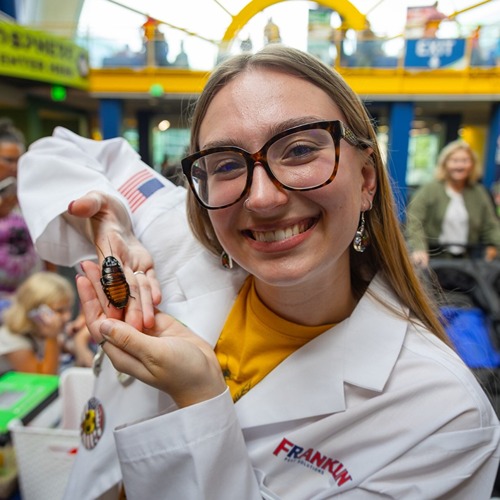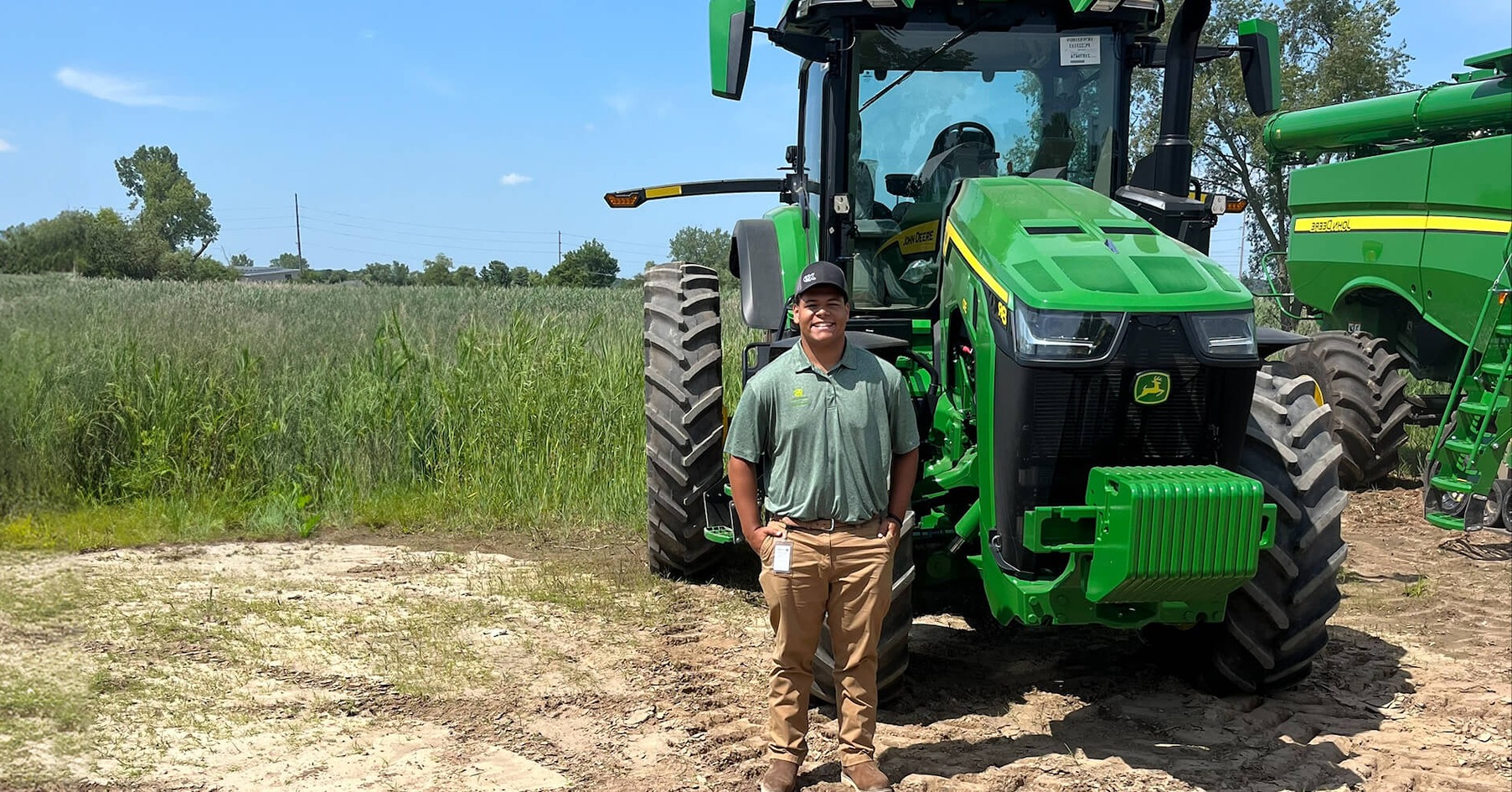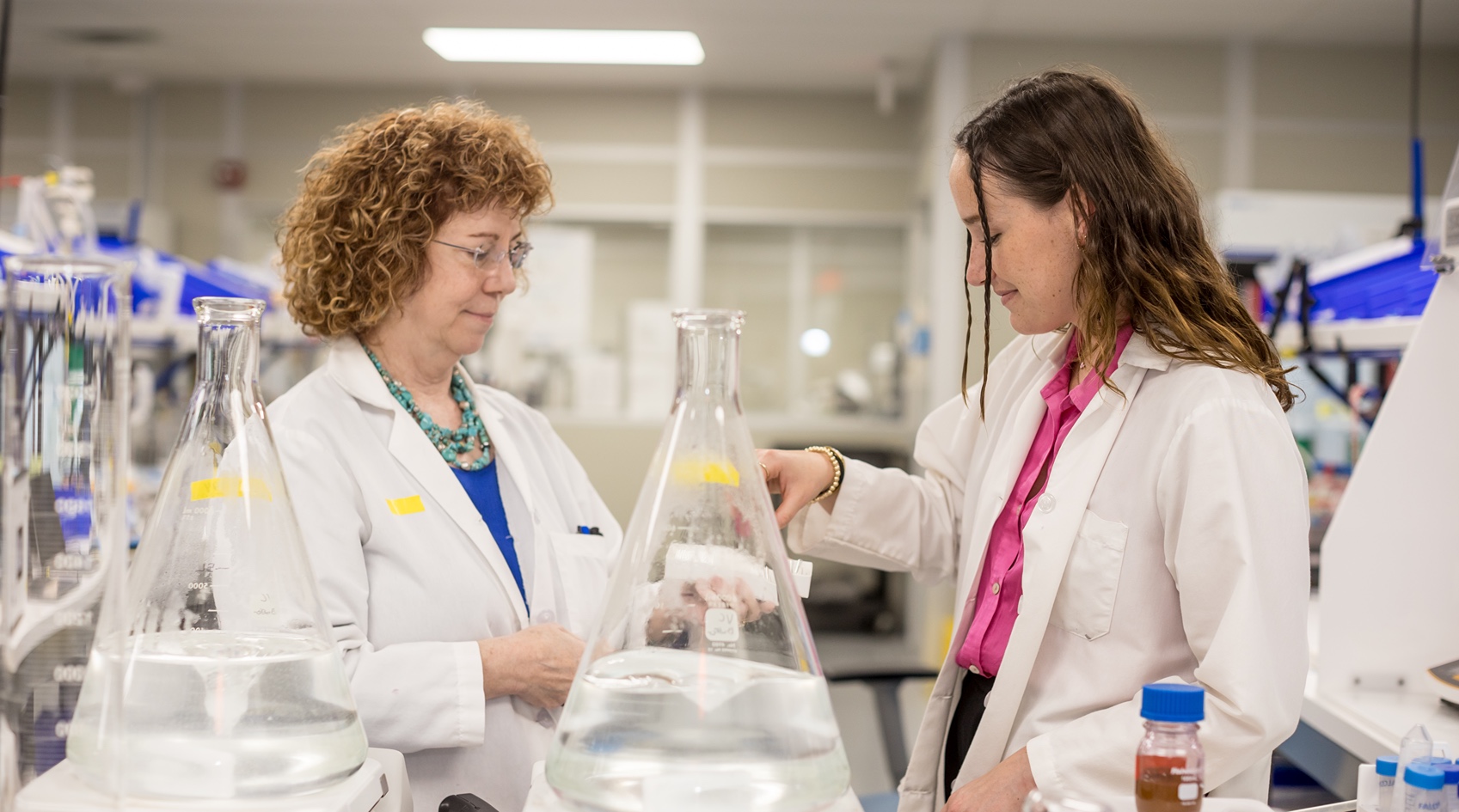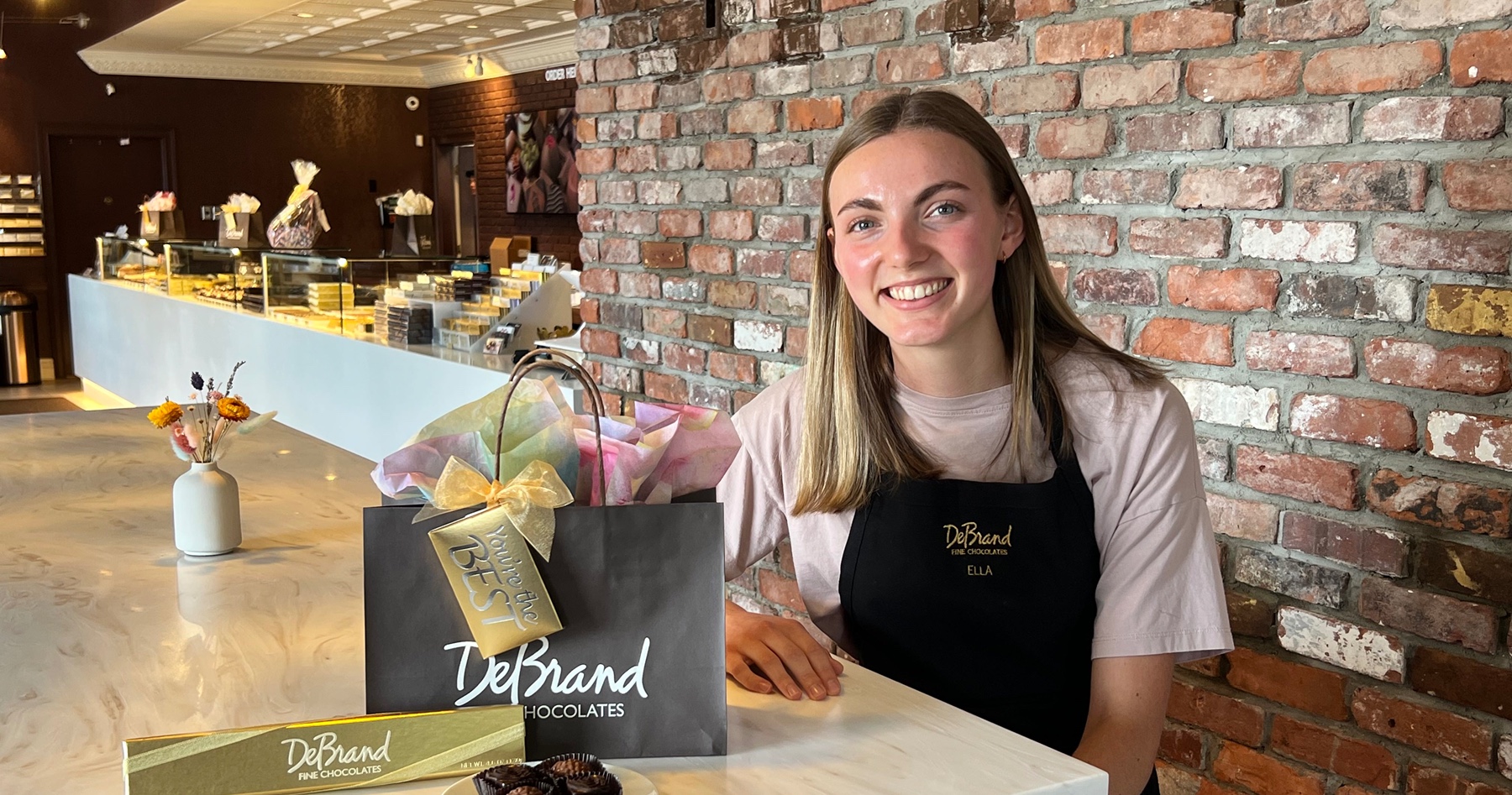Cultivating the Future: Madelyn Pierce

From houseplants to corn and soybeans to fruit trees
At home, Madelyn Pierce is surrounded by houseplants. At work, she was surrounded by corn and soybeans. With her passion for plants and the sciences behind them, Pierce, a biochemistry major and horticulture minor, interned with Agronomy 365 this summer to gather data on farm fields to give targeted advice to farmers.
Agronomy 365 takes soil and tissues samples from farmers’ fields and provides farmers with information such as nutrient levels, possible disease and end-of-season recommendations to meet production goals. The company also aims to educate farmers through tools like its app, which provides educational videos among other resources.
Pierce primarily helped Agronomy 365 with soil and tissue sampling of corn and soybeans. She covered 60 fields totaling about 6,500 acres, which changed week to week depending on growth patterns and weather conditions. At each field, Pierce gathered tissue or soil samples for testing. For soil sampling, Pierce used a probe to collect 12 “plugs” at two sample points per field. A plug is a round tube of soil taken from a set depth. Tissue sampling required Pierce to gather a set number of leaves or whole plants from plants at each sample point.
Pierce explained, “I would fill out my sample bags, and then I shipped them off at the end of the day. It’s important to get the specimens in quickly so that we can get an accurate result for the number of microorganisms in the sample.”
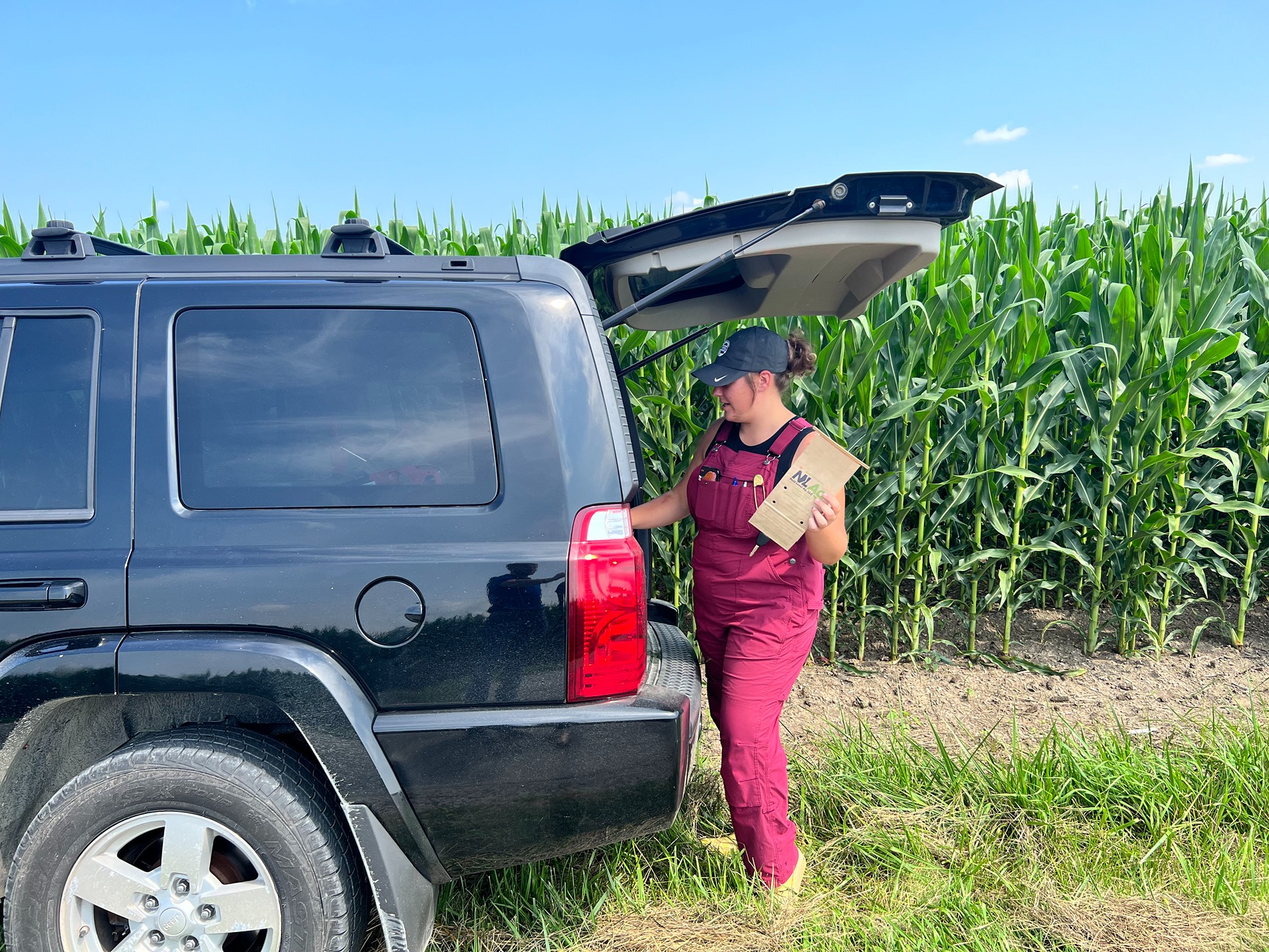 Madelyn Pierce gathers soil and tissue sampling supplies from her car to gauge the field's health
Madelyn Pierce gathers soil and tissue sampling supplies from her car to gauge the field's health Pierce visited each field four times throughout the season. “On my first visit to a field, I typically did a 0- to 6-inch soil sample and a tissue sample, and I logged the growth stage,” Pierce said. “On the second visit, I took tissue samples and a soil sample at a variable depth, depending on the growth stage. As we moved later in the growing season when the plants are in their reproductive stages, I usually only took tissue samples to monitor the crops’ nutrient levels. At the end of the season, I took a tissue sample and a final 0- to 12-inch soil sample, as a last gauge of the soil health.”
Although Agronomy 365’s process works well for getting data on field crops, Pierce also worked to establish a testing protocol to sample fruit crops, such as those grown in orchards, through her internship project.
“I worked on developing a protocol to test soil and tissue samples for fruit trees. It's something that our company hasn't done yet, but they want to,” Pierce said. “I was in contact with Extension officers in Michigan and Indiana, and I did lots of reading and research. I was even set to go to an orchard in Goshen, Indiana, but I ran out of time before my internship ended.”
Through her project, Pierce was able to fully explore her interests in biochemistry and horticulture. “I’ve had the opportunity to learn so much about the inner workings of large-scale crop and fruit tree production. I am not an agronomist, but using Agronomy 365’s tools has been helpful in connecting my internship’s fieldwork to biochemistry. Being able to see how the different microorganisms and soil chemistry affects plant health has been fascinating.”
Pierce plans to pursue a combination of biochemistry, medicine and horticulture after she graduates in Spring 2025. “I would love to continue research on biochemistry in plants or how they can be used in fields like pharmaceuticals in the future, and I’d love to get my master's or doctorate.”
Reflecting on her internship experience, Pierce said,
“Plants offer us so much. This internship has helped me form an appreciation for the many people involved in agriculture and has let me play a role.”

